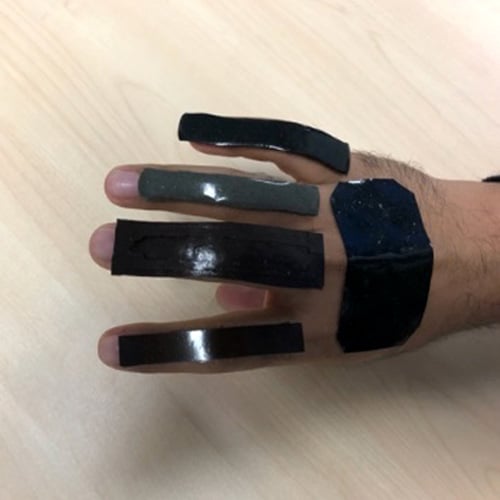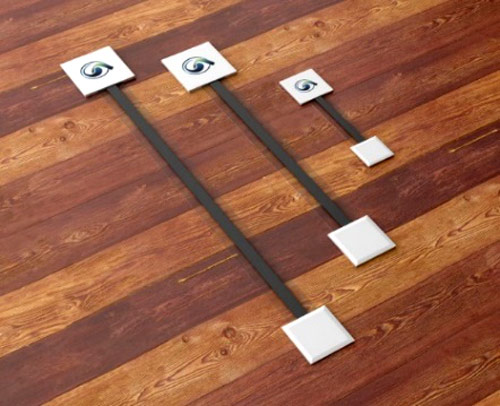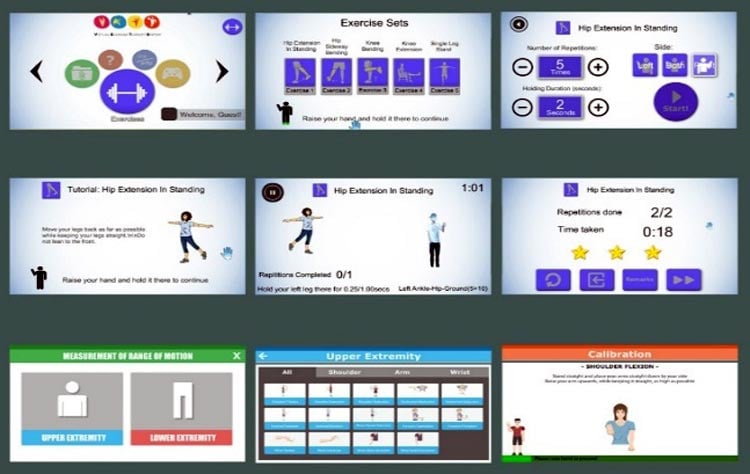
Smart wearables are the next big thing in the consumer market! Many companies across the globe have nailed it with smart tech wearable devices. But up till now, these smart wearable devices have been limited to certain parts of the body. Expanding the horizon, Mayank Rajput along with his co-founder initiated the venture, StretchSkin Technologies with the aim to develop next-generation soft sensors for a wide range of applications from gaming, rehabilitation, fitness for exercise, analytics, and medical purposes.
Combining an innovative approach using soft electronic materials, signal acquisition, and data analytics engineering, the company has made seamless integration of electronic functionality into ultra-thin patches, and smart clothing achievable. Keenly interested in knowing about the electronic sensors the company makes and advancements in e-skin wearables, we spoke to Mayank Rajput, Founder of StretchSkin Technologies, and asked him a few questions. Hit a jump to read the entire conversation we had with him.
Q. What is the technology behind stretchable electronics? Does Stretchable Electronics and E-skin refer to the same?
Stretchable electronics from StretchSkin Technologies take on a hybrid combination of soft functional materials, compliant membranes, sensors, and integrated functional chip components to achieve mechanical reliability and sensitivity along with high flexibility and stretchability attributes. We use high-performance nano-materials, nanowires, nanoparticles in a polymer matrix because of its excellent electrical and mechanical properties. At the same time, it also has biocompatible qualities making it suitable for the human skin. A conforming contact allows continuous, real-time monitoring of body movements and detects a subtle change of motion. Apart from motion detection, our stretchable electronics-based sensors can also detect force.

E-skin refers to the electronic skin which is an ultra-thin electronic assembly (a few millimeters thin like the human skin). The core technology behind E-skin is the use of stretchable electronic sensors. The electronic assemblies have multiple sensors in them and can be deformed into any shape and size thus allowing them to be placed on any part of the human body.
Q. What is the problem with existing wearable devices? How do you think stretchable electronics will contribute to wearables?
CMOS-based electronic sensors and components are still mechanically rigid and brittle and there is still less demand due to the limitation in terms of accuracy, big sizes, non-ability to be deformed in different shapes and sizes, and high-power consumption. So, there is always a problem with body conformal electronic systems with these sensors.
On the other hand, sensors based on stretchable electronics are flexible and stretchable. These are further deformable into curvilinear shapes to enable functionalities that were impossible to achieve by traditional hard and rigid electronics. The core properties of stretchable electronics facilitate the development of wearables that are pervasive and unobtrusive for applications such as healthcare monitoring, Industry 4.0, smart clothing, and gaming peripherals.

Q. What inspired you to start StretchSkin? How did the company get off the ground?
I used to volunteer for multiple NGOs in Singapore and India. These NGOs were working towards the elderly and stroke recovering people. While volunteering, I realized that there is a need for affordable physical and occupational rehab for the older population in Singapore, which motivated me to begin my entrepreneurial journey. My co-founder and I started StretchSkin Technologies in October 2018 with a vision to improve the life of people in Southeast Asia and India with affordable digital rehabilitation as a primary focus using sensors, games, and smart clothing.

Q. What is StretchSkin currently working on and what would be the first product from StretchSkin that would hit the markets?
The very first product from our company is the Virtual Exercise Therapy System (VETS) which comes with a data-driven personalized recommendation. It is under pilot testing at elderly care centers in Singapore. We have also made affordable data gloves for gaming and active rehab which are under internal evaluation. Rehab gloves and body joints measurement soft wearables will be available separately. These can be used with the developed Android apps and can further be integrated with VETS for further advanced data-driven recommendations.


Q. What are some of the major technological problems that you face when working with Stretchable electronics? How do you address them?
We have made several stretchable sensors such as resistive and capacitive sensors and gel-free conductive electrodes but their future implementation would require mass production. There is a need for an automated approach in the printing process that produces all‐printed stretchable electronics that comprise the soft silicone elastomers and conductive materials. The automated approach is used to create and maintain complex conductive and multi-layer geometries on a single printing platform, which will facilitate increasing process scalability and repeatability.
Without an automated printing process such as roll-to-roll manufacturing, it would be difficult to further scale up the manufacturing process of stretchable sensors. Furthermore, the mass manufacturing quality testing of multiple sensors at the same time requires multiple testing machines that need substantial capital to speed up the delivery time. To solve the mass manufacturing problem, we are working towards a strategic partnership with the leading contract manufacturer for printed electronics in the US.
Q. How do your stretchable devices communicate with the world? What kind of wireless technologies would you suggest for stretchable devices and why? Also, how does your company deal with the problem of power consumption in wearable electronics?
Currently, companies are using multiple approaches such as BLE, Wi-Fi, etc. to communicate flexible and stretchable devices in the world. We are working with Bluetooth Low Energy (BLE) which uses 2.4 GHz radio frequencies with a simple modular system to communicate our devices. Our use cases and applications don’t require 24 X 7 monitoring. So, power consumption is not a major problem for us till now. Furthermore, we are also exploring NB-IoT for some StretchSkin wearables for the Industry4.0.
Q. How are various electronic components and sensors connected in stretchable devices? Does it use something like a printed circuit fabric?
Various electronic components and sensors are connected in a stretchable device with the help of stretchable conductive tracks and conductive epoxies. Later, based on the application requirement, we combine stretchable sensor assembly with rigid electronics such as the control unit consisting of a signal conditioning circuit, battery, and microcontroller. Currently, we are not using any fabric for sensing.
Q. Are there enough variants of sensors and electronic components that are dedicated to stretchable electronics? How do you procure them?
Yes, there are multiple variants of sensors and electronic components such as strain sensor, force sensor, EMG electrodes, passive components such as resistors, capacitors, inductors, etc. which are the backbone of our tech. We print these sensors and components in-house using screen-printing and several other coating techniques.
Q. How do you see the market for stretchable electronics? Which sector do you think will adopt this technology faster?
The global market for stretchable electronics (e-skin) itself around the US $400M but its application encompasses wide-ranging use of wearables in various markets which is worth US$300B. About 60% of wearables are pretty much limited to wrist bands.
Many parts of the body could do with specifically designed wearables such as the spine, private body parts, fingers, toes, etc. using stretchable electronic skin-based wearables. We are talking about expanding the global wearables market which up till now has been limited to certain parts of the body, with products coming from a limited number of companies.
There are multiple opportunities for e-skin wearables in the market. Currently, the focus in academia and Industry is on tactile sensing capabilities such as strain, pressure, and temperature are important for health monitoring in skin attachable wearables, and object manipulation and detection for robotics and prosthetics. But there are other emerging trends in e-skin wearables that have created a dramatic impact on human-computer interaction and human-machine interfaces mainly using neural electrodes, EOG, EEG technologies.

